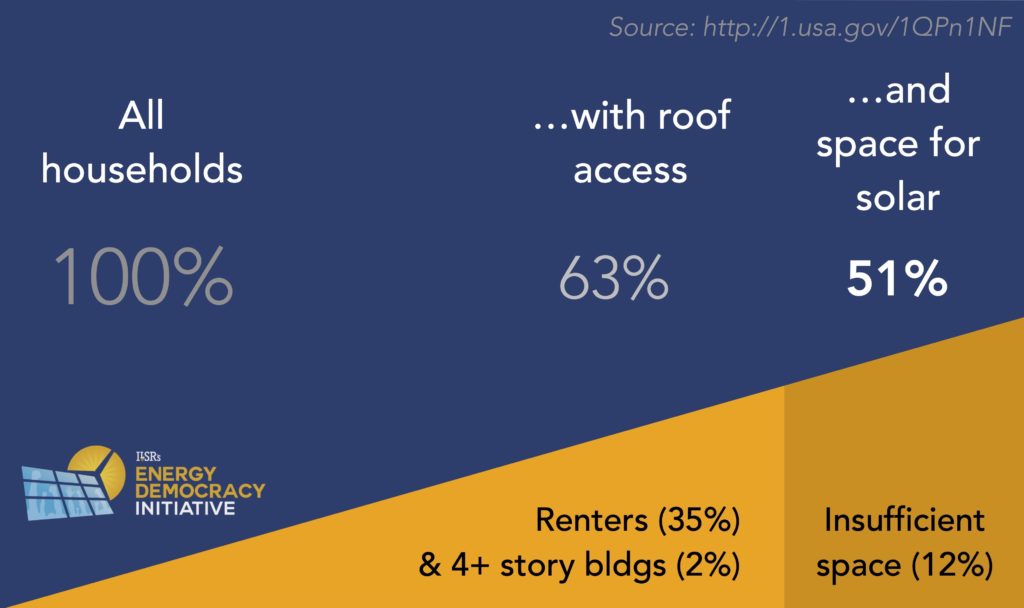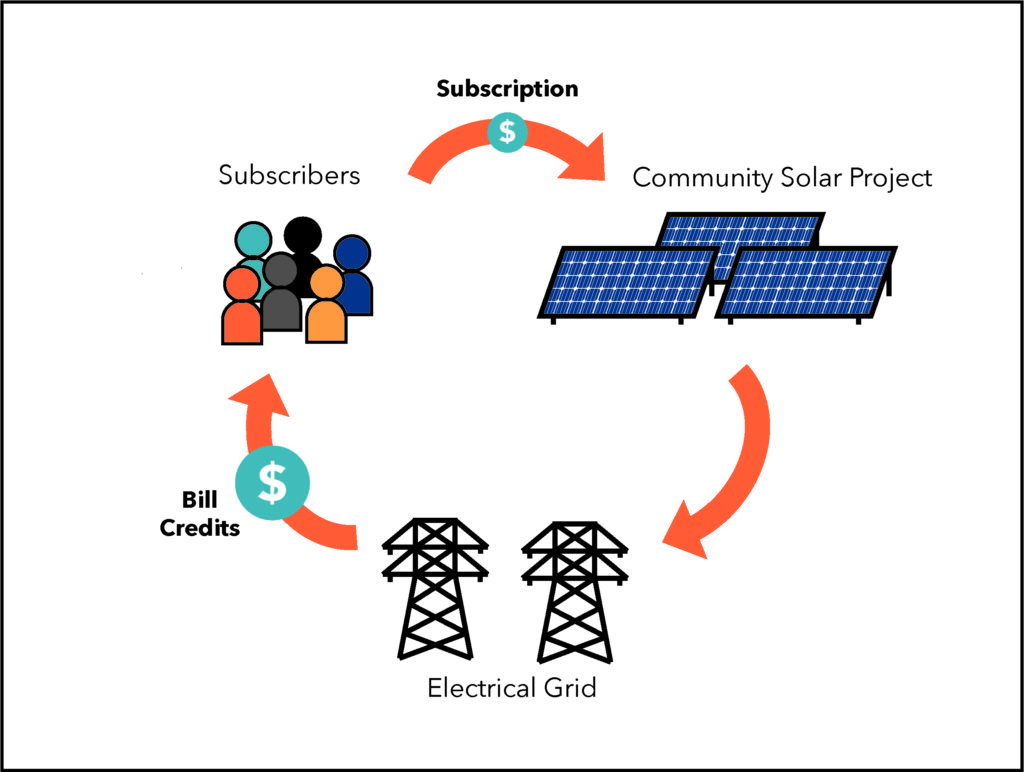National Community Solar Program Tracker
Credit to Author: John Farrell| Date: Mon, 04 Nov 2019 20:25:59 +0000
Published on November 4th, 2019 | by John Farrell
November 4th, 2019 by John Farrell
Originally published at .
![]() For decades, rooftop solar has allowed homeowners to generate their own renewable energy — reducing their dependence upon grid energy and lowering their energy bills.
For decades, rooftop solar has allowed homeowners to generate their own renewable energy — reducing their dependence upon grid energy and lowering their energy bills.
However, solar rooftops are not an option for many people. What about those who can’t afford it? Or people renting their homes? Only about half of buildings have roofs that are large enough, face the right direction, and get enough sun for solar energy production.
Community solar picks up where traditional rooftop solar isn’t available. Through community solar, individuals subscribe to a portion of a nearby solar project and get credits on their energy bill for the electricity it produces. This way, people without the financial means for solar on their rooftops and people who don’t own suitable rooftops can still reap the benefits of renewable energy. Local governments and installers can go even further to include subscribers with poor credit, or use local installers on the project.
Community solar can and has been installed on places of worship, in brownfields, and over parking lots.
For more details on the benefits of community solar, see this report from Vote Solar, MnSEIA, and the Institute for Local Self-Reliance.
We report on Minnesota’s community solar program every month in this blog post, but community solar is gaining traction in other states, too. Community solar can happen in any state sharing two key market characteristics: virtual net metering and requirements for utilities to connect distributed solar to the grid (interconnection rules). Community solar program legislation can include both elements. 16 states have passed legislation enabling community shared solar gardens, but only four have active programs with multiple installations. This post will be updated quarterly with the number of projects and megawatts of installed capacity in each state with a formal community solar program that allows non-utility ownership. Although rural electric cooperatives have built a significant amount of community solar, the programs do not allow non-utility ownership and may differ from state-based programs that are structured to provide bill savings to customers.
![]() After a successful pilot program in 2010, Colorado finally saw an expanded community solar garden program in 2016. The program still has a cap of 105 MW, a figure grown out of Xcel’s settlement deal. The Colorado community solar program has always had a goal of inclusivity. Since the 2010 pilot, the program has had a 5% carveout for low-income customers. Now, advocates hope this percentage can be dramatically increased as the state continues to update the program. At the end of 2018, Colorado’s community solar program hit 51 completed projects with 51 total megawatts of operational capacity.
After a successful pilot program in 2010, Colorado finally saw an expanded community solar garden program in 2016. The program still has a cap of 105 MW, a figure grown out of Xcel’s settlement deal. The Colorado community solar program has always had a goal of inclusivity. Since the 2010 pilot, the program has had a 5% carveout for low-income customers. Now, advocates hope this percentage can be dramatically increased as the state continues to update the program. At the end of 2018, Colorado’s community solar program hit 51 completed projects with 51 total megawatts of operational capacity.
![]() Although the Massachusetts Senate passed a virtual net metering bill in 2008, it didn’t begin tracking community solar projects until 2014. Community solar programs qualify for two Massachusetts Department of Energy Resources programs: RPS Solar Carve-out II and Solar Massachusetts Renewable Target (SMART). In the second quarter of 2019, Massachusetts’s community solar program hit 175 completed projects with 235 total megawatts of operational capacity.
Although the Massachusetts Senate passed a virtual net metering bill in 2008, it didn’t begin tracking community solar projects until 2014. Community solar programs qualify for two Massachusetts Department of Energy Resources programs: RPS Solar Carve-out II and Solar Massachusetts Renewable Target (SMART). In the second quarter of 2019, Massachusetts’s community solar program hit 175 completed projects with 235 total megawatts of operational capacity.
![]() Minnesota’s community solar program launched in December of 2014, with the first full megawatt of projects installed in January 2017. The program has since taken off to become the most successful in the country. The success of the program in Minnesota can largely be attributed to its design, which places no caps on community solar project development. It is also carefully constructed to make solar economically viable. According to ILSR’s analysis, the program has saved Xcel Energy customers millions of dollars. In the second quarter of 2019, Minnesota’s community solar program hit 201 completed projects with 559 total megawatts of operational capacity.
Minnesota’s community solar program launched in December of 2014, with the first full megawatt of projects installed in January 2017. The program has since taken off to become the most successful in the country. The success of the program in Minnesota can largely be attributed to its design, which places no caps on community solar project development. It is also carefully constructed to make solar economically viable. According to ILSR’s analysis, the program has saved Xcel Energy customers millions of dollars. In the second quarter of 2019, Minnesota’s community solar program hit 201 completed projects with 559 total megawatts of operational capacity.
![]() In 2017, New York’s Public Service Commission passed the Value of Distributed Energy Resources (VDER) tariff. Meant to replace net metering, VDER credits distributed solar with a monetary value based on the many values that it provides to the system, including avoided fuel costs and avoided future power plant construction costs (for a deep dive, see our 2018 VDER coverage). Big utilities have supported VDER because, in some cases, the compensation rate of VDER is much lower than net metering. On top of this, it has made community solar programs confusing for developers and customers. In 2018, community solar advocates tried to put a moratorium on VDER, likening it to the Darth Vader of the community solar world. The Public Service Commission hopes a 2019 update will improve the program and make way for more community solar. In the second quarter of 2019, New York’s community solar program hit 88 completed projects with 67 total megawatts of operational capacity.
In 2017, New York’s Public Service Commission passed the Value of Distributed Energy Resources (VDER) tariff. Meant to replace net metering, VDER credits distributed solar with a monetary value based on the many values that it provides to the system, including avoided fuel costs and avoided future power plant construction costs (for a deep dive, see our 2018 VDER coverage). Big utilities have supported VDER because, in some cases, the compensation rate of VDER is much lower than net metering. On top of this, it has made community solar programs confusing for developers and customers. In 2018, community solar advocates tried to put a moratorium on VDER, likening it to the Darth Vader of the community solar world. The Public Service Commission hopes a 2019 update will improve the program and make way for more community solar. In the second quarter of 2019, New York’s community solar program hit 88 completed projects with 67 total megawatts of operational capacity.
Each program has been constantly evolving. Several of the programs have had to loosen restrictions, increase individual project size limits, and expand the overall size of the program. New programs would do well to build these changes into their programs from the beginning. To date, Minnesota has seen the most success with community solar. Massachusetts and Minnesota had close to the same installed capacity in quarter three of 2017, 114 MW and 116 MW respectively, but the Massachusetts program has not been able to achieve the same rate of growth as Minnesota. This is, again, because the Minnesota program has no caps and secures an economical payout for installations. Colorado and Minnesota are served by the same utility company. Xcel in Colorado (the Public Service Company of Colorado), however, has maintained severe program caps on Solar Rewards Community Gardens. The Colorado Public Utilities Commission has approved each program cap in a series of expansions. Despite the Colorado state legislation passing one of the first community solar bills in 2010, the program has struggled to grow within its confines.
Hawaii, Illinois, and Maryland all have budding community solar programs, but have yet to see many interconnected projects. Return to this page for updates on these programs as they get started, in addition to quarterly progress of the original four.
Interactive:
Reports:
For podcasts, videos, and more, see ILSR’s community renewable energy archive.
This article originally posted at ilsr.org. For timely updates, follow John Farrell on Twitter or get the Energy Democracy weekly update. Featured photo credit: Susan Sarmoneta via Flickr (CC BY-NC-ND 2.0)
![]() Follow CleanTechnica on Google News.
Follow CleanTechnica on Google News.
It will make you happy & help you live in peace for the rest of your life.
John Farrell directs the Democratic Energy program at ILSR and he focuses on energy policy developments that best expand the benefits of local ownership and dispersed generation of renewable energy. His seminal paper, Democratizing the Electricity System, describes how to blast the roadblocks to distributed renewable energy generation, and how such small-scale renewable energy projects are the key to the biggest strides in renewable energy development. Farrell also authored the landmark report Energy Self-Reliant States, which serves as the definitive energy atlas for the United States, detailing the state-by-state renewable electricity generation potential. Farrell regularly provides discussion and analysis of distributed renewable energy policy on his blog, Energy Self-Reliant States (energyselfreliantstates.org), and articles are regularly syndicated on Grist and Renewable Energy World. John Farrell can also be found on Twitter @johnffarrell, or at jfarrell@ilsr.org.

